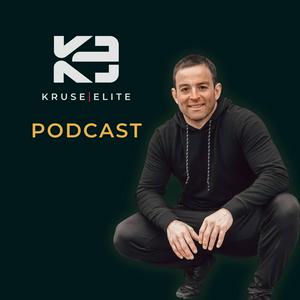#52 - Primitive Reflexes Explained: How Early Brain Development Shapes Behavior, Learning & Emotions with Rachel Harrington
Did your child skip some developmental milestones or seem a little behind in hitting them? Do they struggle with things like catching or throwing a ball, playing sports, or even making friends? Or maybe you were that kid once upon a time?
In today’s episode, I’m chatting with pediatric occupational therapy assistant Rachel Harrington all about primitive reflexes—what they are, how and when they develop, and how they impact both kids and adults in daily life.
We dive into how these reflexes get kick-started during the birthing process, how many are guided by the visual system, and why it’s so important to integrate them as children grow. We also talk about how primitive reflexes can actually come back after trauma or as part of the aging process, acting as a protective mechanism.
Rachel breaks down the signs of poor reflex integration—things like ongoing anxiety, vestibular dysfunction, feeling ungrounded, poor left/right coordination, ADHD, bedwetting, IBS, trouble sitting still, speech or articulation challenges, and more.
We nerd out a bit on the neuroanatomy behind primitive reflexes and get into practical tools like breathing exercises, motor control drills, and vestibular activities. We even chat about how these concepts overlap with applied neuro training.
Plus, Rachel shares activity ideas for kids who struggle with emotional regulation and explains how to choose drills based on whether a child is over- or under-responsive.
Huge thanks to Rachel for sharing her deep knowledge of pediatric occupational therapy and for creating such incredible resources for both parents and practitioners.
Click below to follow and work with Rachel and her team at The Sensory Project and Sensational Brain.
Websites:
https://sensationalbrain.com/
https://thesensoryproject.com/pages/integrative-achievement-center
Amazon: https://www.amazon.com/stores/page/59C6E9E1-DEC9-4839-80BA-1B21D5D9D87F?ingress=2&lp_context_asin=B0FM8MQC2F&lp_context_query=the%20sensory%20project&visitId=ec71f4a3-c3c9-4710-8da7-88f70d8effd5&store_ref=bl_ast_dp_brandLogo_sto&ref_=ast_bln
Instagrams:
@sensationalbrain
@thesensoryproject208
Podcast: https://harkla.co/blogs/podcast Freebies: Reflex checklist: https://masterful-flower-376.myflodesk.com/pijs6q3tr7
Sensory checklist: https://masterful-flower-376.myflodesk.com/free-sensory-checklist
Free Resources:
Join our mailing list HERE to stay up to date on the latest updates from Kruse Elite
Join our free Neuro Masterclass here to get a taste of how neurology impacts your movement and pain issues
Subscribe to our YouTube HERE for in-depth educational videos and tutorials
Whenever you're ready here's how we can help you:
Become an expert in problem solving movement and pain issues with our beginner neuro course, Neuro Foundations
Master applied neurology so you can feel confident you can help anyone who walks through your door by joining our advanced neuro course, The Neuro Dojo


